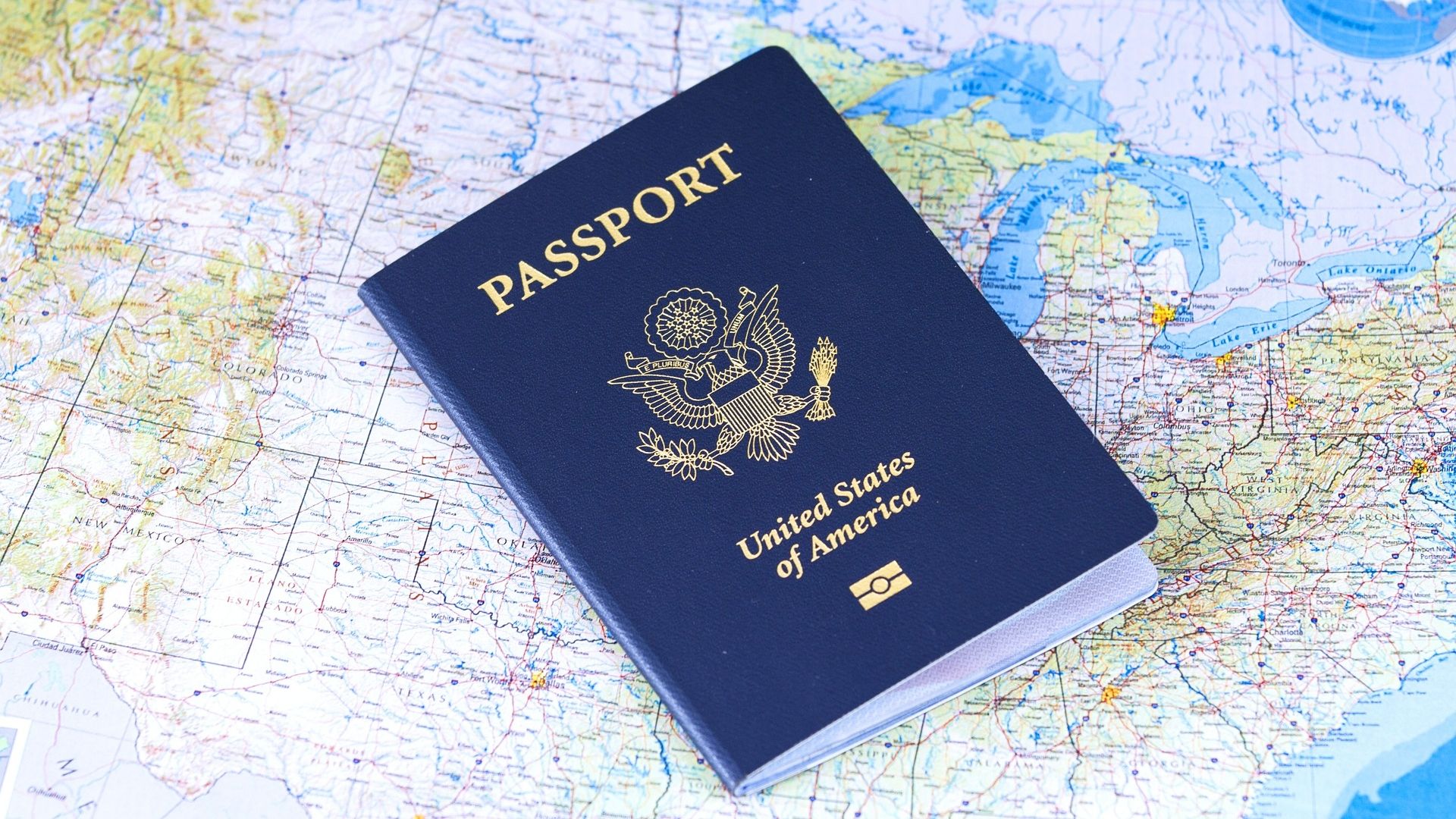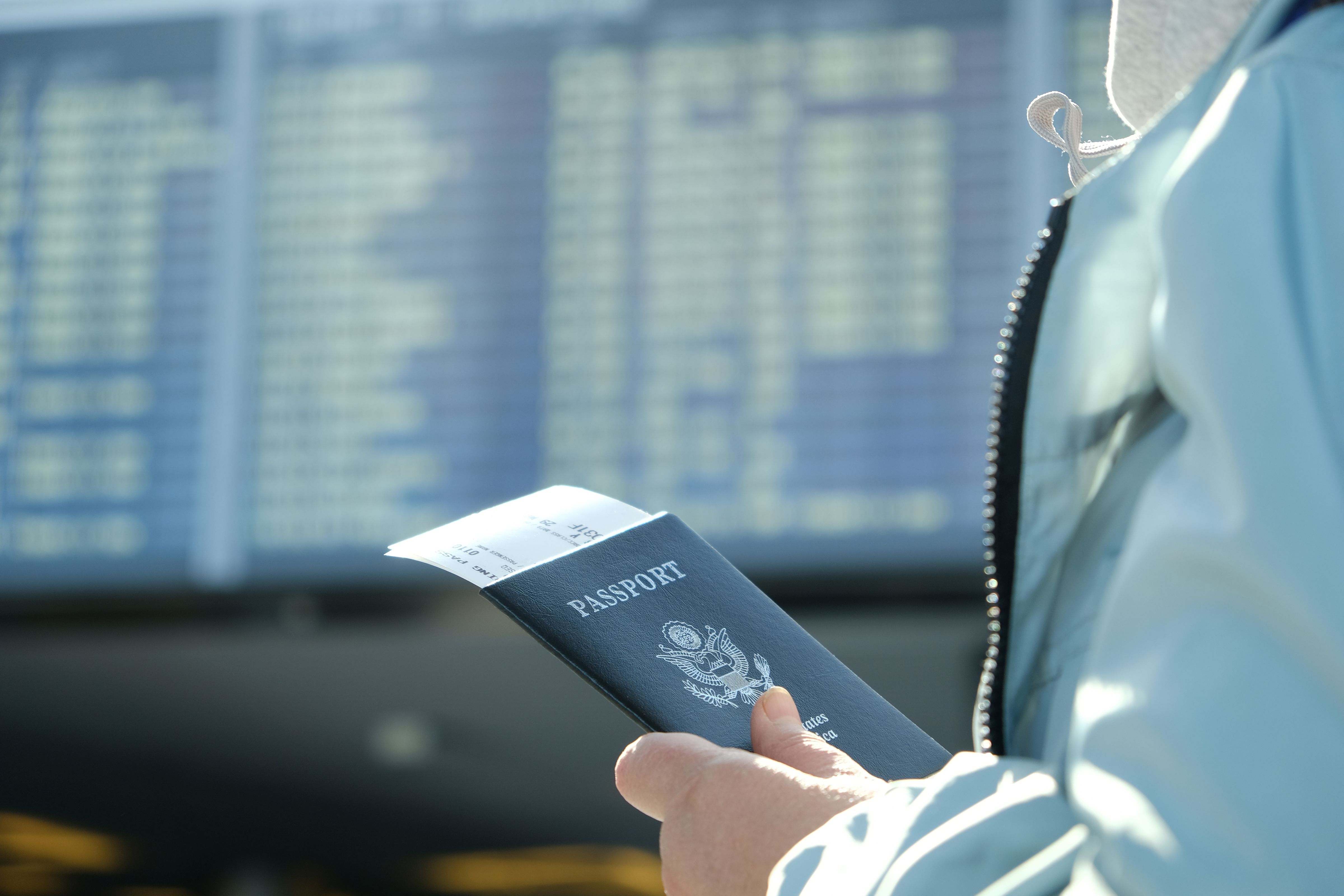Why Your U.S. Passport Might Not Work In 2025 Despite Not Being Expired

With each new year comes new travel opportunities. As 2025 settles in, more and more people across the United States are trying to keep to their resolution to travel to new and exciting places. While the United States is certainly big enough to offer plenty of new and exciting travel opportunities by itself, there’s also a wide world out there for Americans to explore.
Any American who wants to travel outside the U.S. this coming year has probably spent a good amount of time on the status of their passport. Even experienced travelers may have questions about the specific passport requirements for different destinations, like how far in advance of your trip you should submit your passport applications, or whether or not you even need a passport to go somewhere like Canada.
The good news is that there are places outside of America you can travel to without a passport. You might even be able to find cheap spring break flights to the Caribbean that don’t require a passport at all. But, for the most part, a valid U.S. passport is an essential item for international travel.
Unfortunately, getting a valid passport can be a bit more fickle than one would think. The passport application process generally takes around four to six weeks and incurs various fees depending on when you need it. There are also complicated passport questions you have to deal with, like whether a passport book or a passport card is better for your particular trip. Add the headaches of issues like what to do if you lose your passport on vacation, and the entire process becomes more convoluted than you’d like.
2025 has both good news and bad news on the passport front. The good news is that new laws and regulations in many top international destinations are likely going to simplify the travel process for Americans in the long term. The bad news is that these regulations may create additional complications and headaches in the short term.
Perhaps the biggest frustration you may face during your upcoming international vacation is the possibility that the validity of your current passport may not be enough to let you into a particular country. Thanks to visa regulations across Europe and other popular travel destinations, a non-expired passport is necessary but not always sufficient for international travel.
If you’re planning an international trip this coming year, it’s important to pay attention to the specific entry requirements for each country you’re planning on visiting. This way, you can ensure you avoid the nightmare of being denied entry even with a valid U.S. passport.
Related
Do You Need A Passport To Go On To Puerto Rico?
Puerto Rico is part of the United States, but does it require a passport to visit?
2025 Will See New Visa Requirements For Americans In Both The UK & The EU
Starting this year, your U.S. passport won’t be enough if you’re traveling to Europe
Europe has long been a top travel destination for Americans. But starting in 2025, both the U.K. and the European Union will implement new visa regulations that affect American citizens. In both cases, a valid U.S. passport is no longer enough to visit either the U.K. or EU member states. Rather, American citizens will need to secure a specific type of visa and travel authorization before their trip.
Beginning on January 8, American citizens traveling to the United Kingdom will need an Electronic Travel Authorization (ETA) in addition to a valid U.S. passport. The British ETA is good for up to six months in the U.K. for tourism, visits, or short-term business. Applications for the U.K. ETA require payment of a $12.75 application fee, though does not require additional travel details.
Notably, applications can take up to three business days to process, so it’s a good idea to submit your application well in advance of your trip to the U.K. Once you secure an ETA for travel to the United Kingdom, it’s good for up to two years, or the expiration of your current passport.
While the U.K.’s ETA is good for vacations, family visits, and short-term travel, it does not cover long-term residency for work, education, or family relations. If you are looking to move to the U.K. on a longer-term basis, you’ll need to apply for a different visa through the British Home Office.
Similarly, travel to the European Union for American citizens will soon require authorization from the European Travel Information and Authorization System (ETIAS). Similar to the U.K.’s ETA, the European ETIAS requires a successful application before your trip to the EU. Once the ETIAS program goes into effect, a valid U.S. passport will no longer be enough to enter the 30 European countries participating in the program.
To apply for a European ETIAS, you will need a valid, machine-readable passport and access to a computer or mobile device. The application costs seven euros, or around $7.29, and can take up to 96 hours to process. Once your ETIAS application has been approved, you will be able to travel to relevant European countries for up to 90 days within the ETIAS’s three-year validity window.
Both the U.K.’s ETA program and the European ETIAS program were originally meant to go into effect much earlier. However, technical issues and the COVID-19 pandemic pushed the implementation date back several years. With so many delays and outside complications, it’s more important than ever to make sure that you have the correct visa and security authorization for your travel destinations in addition to your valid U.S. passport.

Related
Do You Need A Passport To Go To The Bahamas?
The Bahamas are not part of the US, so a passport is required to visit, right? Well, yes and no. Here’s what to know about going to the Bahamas.
Even If Your U.S. Passport Isn’t Expired, Its Expiration Date Still Matters
Travelers may be prevented from traveling to certain destinations if their American passports are set to expire soon
As if new visa and security requirements weren’t enough of a hassle, you also need to pay attention to your passport’s expiration date to avoid delays or roadblocks on your future trips abroad. You may assume that as long as your passport is not set to expire until after you’re scheduled to return from your trip, you won’t have any issues traveling. However, some countries may deny you entry if your passport is set to expire within a specific timeframe, regardless of the planned length of your stay.
Many countries have a “six-month” rule for passports of foreign visitors, meaning they may deny you entry if your passport is set to expire within six months or less of your arrival date. Note that this six-month rule applies regardless of your planned return to the United States.
In essence, the rule is meant to take into account situations where your return may be delayed due to medical issues, emergencies, or other unexpected changes in circumstances that may keep you in the country past your passport’s expiration date. Countries that require at least six months of passport validity for entry include:
- China
- Egypt
- India
- Israel
- Jordan
- Kuwait
- Malaysia
- Saudi Arabia
- Singapore
- Thailand
- The United Arab Emirates
- Turkey
- Vietnam
If your passport is set to expire this year, it’s a good idea to get it renewed before leaving the country, just in case. If necessary, you can pay for an expedited passport application if your trip is imminent.

Related
6 Things You Didn’t Know About Your Passport Photos
Passport photos are a crucial part of your passport application, and if they’re rejected, you’ll have to start over.
Always Check The Specific Visa Requirements For Your Travel Destinations Well In Advance
Different countries have different requirements, though there are a few “passport best practices” you should always follow just to be safe.
US Passport at airport.
As you can probably see, many of the current passport headaches you may face are the result of different countries having different entry requirements for American citizens. New security technology allows streamlined security authorization programs like the ETA and ETIAS, which can help better coordinate large numbers of foreign visitors while maintaining essential security measures.
At the same time, all of these new entry requirements going into effect around the same time create several new things you’re going to have to be aware of if you want to travel internationally this year. Checking a specific country’s entry requirements for American citizens weeks ahead of time can be a pain. But it is much less of a pain than waiting until you arrive at another country’s customs and border protection to find out you failed to meet the requirements for entry.
Electronic programs like the ETA and ETIAS mean that European destinations are largely moving away from the traditional physical stamp on your passport pages.
However, many countries do still use a physical stamp instead of a high-tech electronic authorization system. For these countries, the number of blank pages on your passport is quite important. Some countries may deny you entry even with a valid passport if you don’t have enough blank pages remaining.
In general, a good rule of thumb is to always have at least two blank passport pages before traveling. If you’ve run out of blank pages, you may need to apply for a new passport. The good news is that you do have the option of requesting a new passport with extra pages if you are planning on traveling to several different destinations.
Keeping all of this in mind can be a challenge. But a little proactive research on travel requirements is a lot easier (and cheaper) than running into passport problems after you’ve already left for your trip. Regardless of where you’re going, make sure to always double-check the specific entry requirements for American citizens (or the country that issued your passport) well in advance of your trip.
Related
Canada says too little, too late as Trump flip-flops on…
Nadine Yousif and Ali Abbas AhmadiBBC News, TorontoWatch: Canadian liquor store clears out US alcohol in response to tariffsNot long after the US imposed their
Vietnam, Thailand, and Philippines Among Top Asian Destinations Most-Searched by…
Home » Philippines Travel News » Vietnam, Thailand, and Philippines Among Top Asian Destinations Most-Searched by American Travelers, Driven by Surge in Viet
Trump tariffs tarnish ties: Americans anxious about travel to Canada…
Will Trump's tariffs on Canadian goods entering the U.S. affect tourism at home, tarnishing ties Canadians and Americans have shared for decades? It's a fair qu
Looming Trump travel ban strikes fear in Afghans who worked…
Expectations that President Donald Trump will soon bar Afghans and Pakistanis from entering the United States has set off panic among Afghans who were promised












